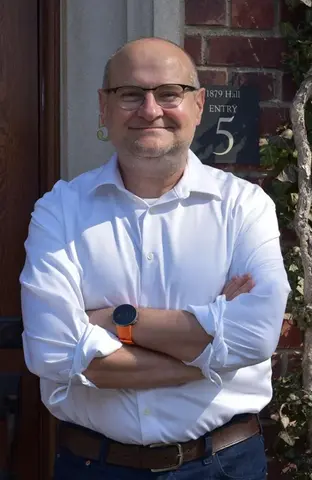Gastwissenschaftler (Max Weber Centre for Advanced Cultural and Social Studies)
Contact
C19 – research building "Weltbeziehungen" / C19.03.17
Office hours
nach Vereinbarung
Visiting address
Campus
Max Weber Centre for Advanced Cultural and Social Studies
C19 – research building "Weltbeziehungen"
Max-Weber-Allee 3
99089 Erfurt
Mailing address
Universität Erfurt
Max Weber Centre for Advanced Cultural and Social Studies
Postfach 90 02 21
99105 Erfurt

Personal Information
Eduard Iricinschi received his doctorate from the Department of Religion at Princeton University. He specializes in the Nag Hammadi literature, late antique Manichaeism, ancient Christian heresiology, and methods and the twentieth-century history of the study of religions. Most recently, Iricinschi was a Fulbright scholar at Princeton University (2023-2024). He has been previously associated with the Sapienza University of Rome (SARAS), Ruhr University Bochum, and Van Leer Jerusalem Institute. He is also an associated member of Laboratoire d‘études sur les monothéismes (UMR 8584, Paris) and of the Institute for History of Religions of the Romanian Academy in Bucharest. At the Max Weber Kolleg, he will work on “Urban Technologies and Late Antique Manichaean Religious Networks.”
Research Project
“‘The Righteous One in the City of the King’ (The Chapters of the Wisdom of My Lord Mani, 356.1): Urban Technologies and Late Antique Manichaean Religious Networks.”
The project investigates the ways in which the religious practices and discourses associated with ancient Manichaeism helped its spread throughout the urban centers of the Roman Empire (Rome, Alexandria, Carthage, and Kellis) and the Persian Empire (Ctesiphon) in the third and fourth century CE. This project proposes the reconstruction of the formative stages of Manichaeism as developing from collections of urbanizing practices, or "technologies.” It also analyzes processes of negotiating boundaries, appropriation, and regulating religious competition in urban settings by focusing on four major processes of urbanity relevant to late antique religious history. The goal of this project is to answer the following questions: How did Manichaeism form in third century CE Persia and spread throughout the urban centers from Asia to Europe as one of the religions of late antiquity with universalist ambitions? What were the main urban practices, materializations, and discourses at work in the organized religious dissemination of Mani’s teachings? How did late Antique North-African and Egyptian Manichaean religious actors create the “spatial capital” resulting from the above diffusion? Also, how did they create material and imagined urban spaces? What were the active ingredients of the processes of spatialization and citification that altered urban landscapes during the major annual Manichaean Bēma festival? The expected outcome of this project is a re-evaluation of Manichaeism as a dualistic urban religion that formed from shared collections of everyday practices, and it will show how those everyday practices, in turn, resulted in and expressed urban conceptualizations.
